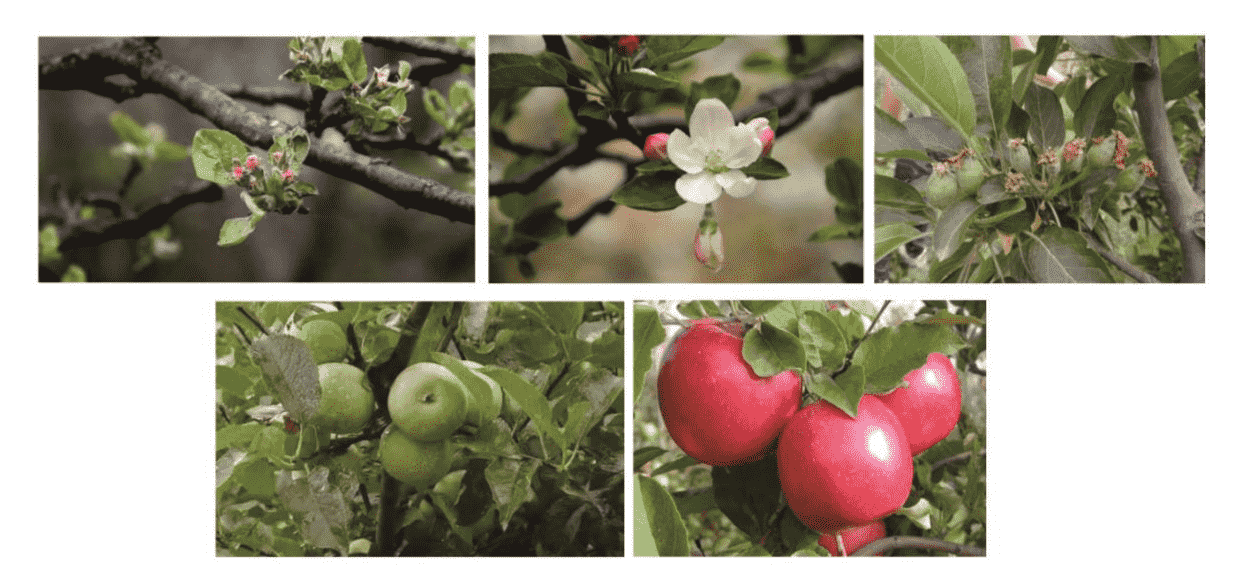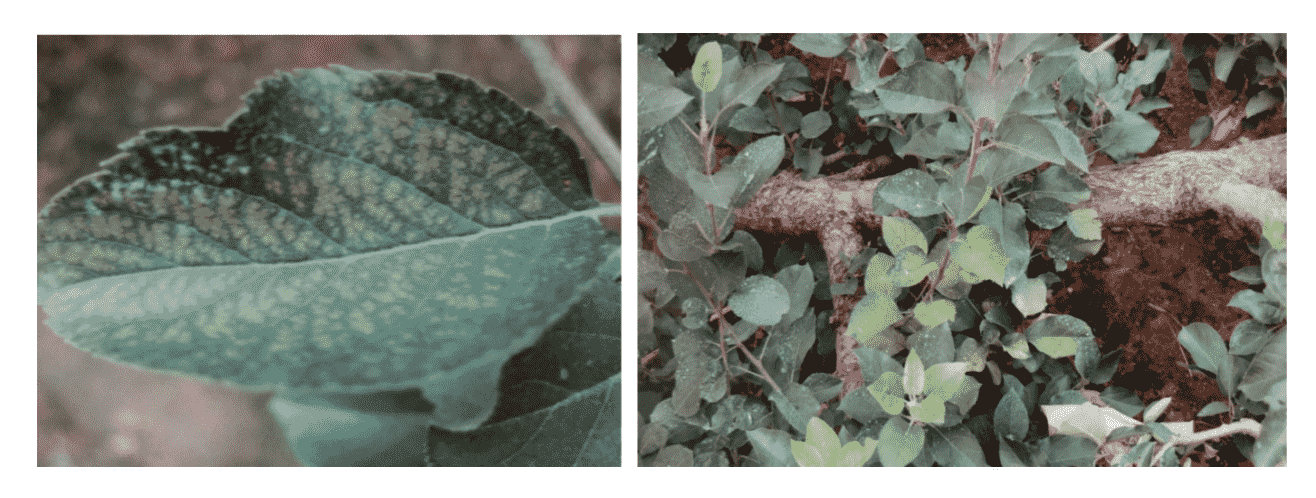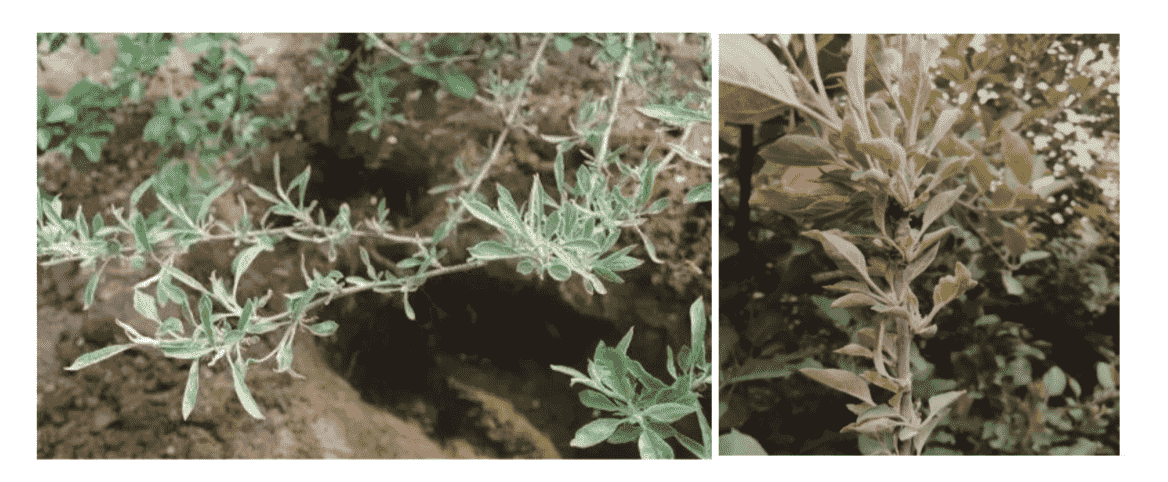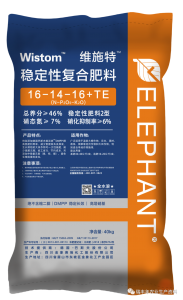Wistom Fertilizer is a high-quality brand known for its ability to effectively supplement micro nutrients. It provides a comprehensive nutrient formula that addresses various micro nutrient deficiencies, such as zinc and boron. Using Wistom Fertilizer ensures that plants receive balanced nutrition, promoting healthy growth and improving yields.
The demand for nitrogen in apple trees is highest during the early growth stages. During the stages of bud break, shoot growth, flowering, and early fruit growth, a large amount of nitrogen is required, but at this time, the nitrogen mainly comes from the nutrients stored within the tree. Afterward, the demand for nitrogen decreases. From harvest until just before dormancy, there is a second peak in root growth, which is also the period when nitrogen nutrition is stored, and thus the demand for nitrogen fertilizer increases significantly again.
The absorption of phosphorus shows a rapid increase in the early growth stages, reaching a peak during flowering. After that, it remains relatively stable and shows no significant changes until the late growth stages.
The demand for potassium follows a pattern of low in the early stages, higher in the middle stages, and low again in the later stages. Specifically, the demand is low during the flowering period, gradually increases, reaching a peak during the fruit enlargement stage, and then gradually decreases afterward.

Characteristics of Nitrogen Deficiency in Apple Trees

Nitrogen Deficiency in Apples - Symptoms:
The leaves on the lower parts of nitrogen-deficient apple shoots turn uniformly yellow, and this yellowing gradually spreads to the upper leaves. The new leaves are small, thin, and light green or purple in color, while the older leaves turn orange, red, or purple and tend to fall off early. The shoots become thin and weak.
In severe cases, the young leaves are very small and show red, orange, or purple hues, and they drop early. The petioles and leaf veins may also turn red, and the angles between the petioles and the small branches decrease.
The number of flower buds and flowers is reduced, the fruits are small, and they color early, mature early, and tend to fall off prematurely.
Characteristics of Nitrogen Deficiency in Apple Trees

Nitrogen Deficiency in Apples - Symptoms:
The leaves on the lower parts of nitrogen-deficient apple shoots turn uniformly yellow, and this yellowing gradually spreads to the upper leaves. The new leaves are small, thin, and light green or purple in color, while the older leaves turn orange, red, or purple and tend to fall off early. The shoots become thin and weak.
In severe cases, the young leaves are very small and show red, orange, or purple hues, and they drop early. The petioles and leaf veins may also turn red, and the angles between the petioles and the small branches decrease.
The number of flower buds and flowers is reduced, the fruits are small, and they color early, mature early, and tend to fall off prematurely.

Causes of Nitrogen Deficiency in Apple Trees
The normal nitrogen content in apple leaves is 2.2% to 2.6%; levels below 1.5% indicate nitrogen deficiency. The condition is more likely to occur in poor soils, when proper fertilization is not practiced, where management is neglected, where weeds are overgrown, or during the growth period of young trees in sandy soils after heavy rains.
Prevention and Remedial Measures for Nitrogen Deficiency
To prevent nitrogen deficiency, apply basal fertilizer in the autumn, mixing inorganic nitrogen fertilizers (such as urea, ammonium sulfate, or ammonium nitrate) with the basal fertilizer or applying nitrogen fertilizers as a top dressing. The amount of pure nitrogen applied should be:
For non-bearing trees: 0.25-0.45 kg per tree.
For early-bearing trees: 0.45-1.4 kg per tree.
For fully mature fruit-bearing trees: 1.4-1.9 kg or more per tree.
During the growing season, spray the leaves with a 0.5% urea solution 2-3 times.
2. Phosphorus Deficiency in Apples - Symptoms
The branches of phosphorus-deficient apple trees are thin and weak, with few lateral branches. The leaves are dark green or bronze-colored, and purple-brown spots or patches appear on the leaf surface near the edges, spreading from the lower leaves to the upper ones. During the growing season, the rapidly growing new shoots have purple-red leaves; the petioles and veins on the underside of the leaves are also purple-red, and the angle between the petioles and branches becomes sharp.
3. Symptoms of Potassium Deficiency in Apples
In potassium-deficient apple trees, the growth of new shoots slows down, and the edges of the leaves at the base and middle of the shoots lose their green color, turning yellow and curling upwards. When potassium deficiency is severe, the yellowed leaf edges become brown and scorched; in extreme cases, the entire leaf becomes scorched but remains attached to the branch. If the affected leaves are in the middle or lower part of the shoot, it is likely due to potassium deficiency. If similar symptoms appear on the upper leaves, it may indicate a calcium deficiency.
The scorched edges caused by potassium deficiency have a clear boundary with the green part of the leaf, and the unaffected areas can still grow normally. In contrast, leaf scorch caused by root rot is marked by a distinct reddish-brown halo between the diseased and healthy areas. Leaf scorch caused by leaf spot disease shows grayish lesions with small black dots, and the affected areas tend to peel off easily.

Causes of Potassium Deficiency in Apple Trees
This condition is caused by a lack of potassium in the tree. Potassium is an essential macronutrient for the growth and development of fruit trees. Its main functions include promoting the thickening of new branches, strengthening the trunk, enhancing the tree's resistance to drought, cold, and pests, improving yield, and improving soil quality, including acidity and organic matter. The normal potassium content in leaves is 1.0% to 2.0%; levels below 0.8% to 1.0% indicate potassium deficiency. Potassium deficiency is more likely in soils with low clay content, sandy soils, soils that have received excessive lime, and in conditions of insufficient sunlight or overly wet soils.
Prevention and Remedial Measures for Potassium Deficiency
In the autumn, apply sufficient organic fertilizers such as pig manure, cow manure, wood ash, and straw manure to meet the long-term potassium needs of the fruit trees. Starting from the fruit enlargement stage, apply 20-25 kg of potassium sulfate or 15-20 kg of potassium chloride per mu. Additionally, spray the leaves with a 0.2% to 0.3% potassium dihydrogen phosphate solution or a 1% to 2% potassium sulfate solution.
Symptoms of Magnesium Deficiency in Apples
When magnesium deficiency occurs, new shoots and tender branches become slender, and the tree's cold resistance is significantly reduced, sometimes leading to dead shoots. In young trees, the lower leaves first lose their green color or drop off, leaving only a few soft, thin, light green leaves at the top. In mature trees, the older leaves on the branches first lose their green color along the edges or between the veins, gradually turning yellowish-brown or dark brown. Flowering is suppressed, and the fruits are small and poorly flavored.

Causes of Magnesium Deficiency in Apples
Magnesium deficiency is less likely to occur in the early spring but is more common after May during the mid to late growing season. The symptoms of magnesium deficiency resemble those of potassium deficiency, but the difference is that magnesium deficiency causes the inner parts of the leaves to lose their green color, whereas potassium deficiency starts at the leaf edges. Magnesium deficiency typically occurs in the middle and lower leaves, while loss of green color in the upper leaves is usually due to other causes. Magnesium is easily leached from sandy and acidic soils, making fruit trees prone to magnesium deficiency. Excessive phosphorus can also hinder magnesium absorption.
Prevention and Remedial Measures for Magnesium Deficiency
Increase the application of organic fertilizers, which can supplement magnesium and reduce its loss. In acidic soils, apply magnesium lime or magnesium carbonate. For magnesium-deficient soils, mix magnesium sulfate with organic fertilizers and ensure the addition of phosphorus, potassium, and calcium fertilizers. Apply magnesium fertilizers at a rate of 15-22.5 kg per mu. In severely magnesium-deficient orchards, spray 1% to 2% magnesium sulfate solution 2-3 times in June and July.
Symptoms of Zinc Deficiency in Apples
The most typical symptom of zinc deficiency in apples is the development of small leaf disease. In the spring, new shoots at the tips produce clusters of narrow, hard, and yellow-green leaves, while other parts of the new shoots may remain leafless for an extended period. The tips and edges of the lower leaves turn brown and scorched, and they drop off early from the middle and lower parts of the tree, leading to a "leggy" appearance. New shoots may also emerge from the lower parts of the top, but they will still have short internodes and small leaves. Flower buds are reduced, resulting in fewer and pale-colored flowers that do not set fruit easily. In old trees, the root system may rot, the tree crown becomes sparse and cannot expand, and the yield is very low.
Causes of Zinc Deficiency in Apples
Zinc deficiency is primarily caused by insufficient zinc content in the tree. Improper pruning can also lead to small leaf disease. There are significant differences in how various apple varieties respond to zinc deficiency. Sandy or alkaline soils are more prone to zinc deficiency.
Prevention and Remedial Measures for Zinc Deficiency
Increasing the application of organic fertilizers can lower soil pH and increase the solubility of zinc salts. Before bud break, spray the tree with a 3% to 5% zinc sulfate solution, or apply a 1% zinc sulfate solution at the beginning of bud break for noticeable effects within the same year. Before or during the early stages of bud break, apply a 1% to 2% zinc sulfate solution to the tips of affected branches to promote new shoot growth.
Proper pruning techniques should be used to avoid wounds from incorrect cuts, and avoid removing excessively large branches all at once. For large branches, use the "leave a stub" or "cutting back small stubs" method, removing them over 2-3 years and applying a 3% zinc sulfate solution to the cut surfaces, followed by wound protection measures. When pruning trees that already exhibit small leaf disease due to improper pruning, focus on light pruning.
Symptoms of Iron Deficiency in Apples
Iron deficiency in apples starts with the leaf tissue turning yellow while the veins remain green, causing a green net-like pattern on the leaf surface. As the deficiency progresses, the degree of chlorosis increases, leading to the entire leaf turning white with the edges becoming dry and scorched, which eventually causes leaf drop. In severe cases of iron deficiency, new shoots may exhibit dieback, affecting the tree's normal growth and development, leading to premature aging, reduced environmental resistance, and increased vulnerability to frost damage or other diseases.
Causes of Iron Deficiency in Apples
Iron deficiency symptoms are common in saline-alkaline soils and soils with high calcium content. During the peak growing season, iron deficiency becomes more severe in drought conditions. Low-lying areas with high groundwater levels, heavy clay soils, and poor drainage can also exhibit more pronounced symptoms of iron deficiency.
Prevention and Remedial Measures for Iron Deficiency
Choose rootstocks that are resistant to iron deficiency. Increase the application of organic fertilizers to improve soil and enhance the availability of iron. In winter, incorporate deep soil tillage with 0.5 kg of ferrous sulfate mixed with 50 kg of manure, and water the soil after application. At the beginning of bud break, spray a 0.3%-0.5% ferrous sulfate solution. Before bud break, use a high-pressure tree trunk injector to apply an acidified ferrous sulfate solution to the tree, adjusting the pH to 3.8-4.4. For trees with a dry trunk circumference of 40 cm or more, inject 20-50 g of ferrous sulfate per tree, with effectiveness lasting up to 5 years.
Recommended Fertilizer:

Post time: Aug-19-2024





